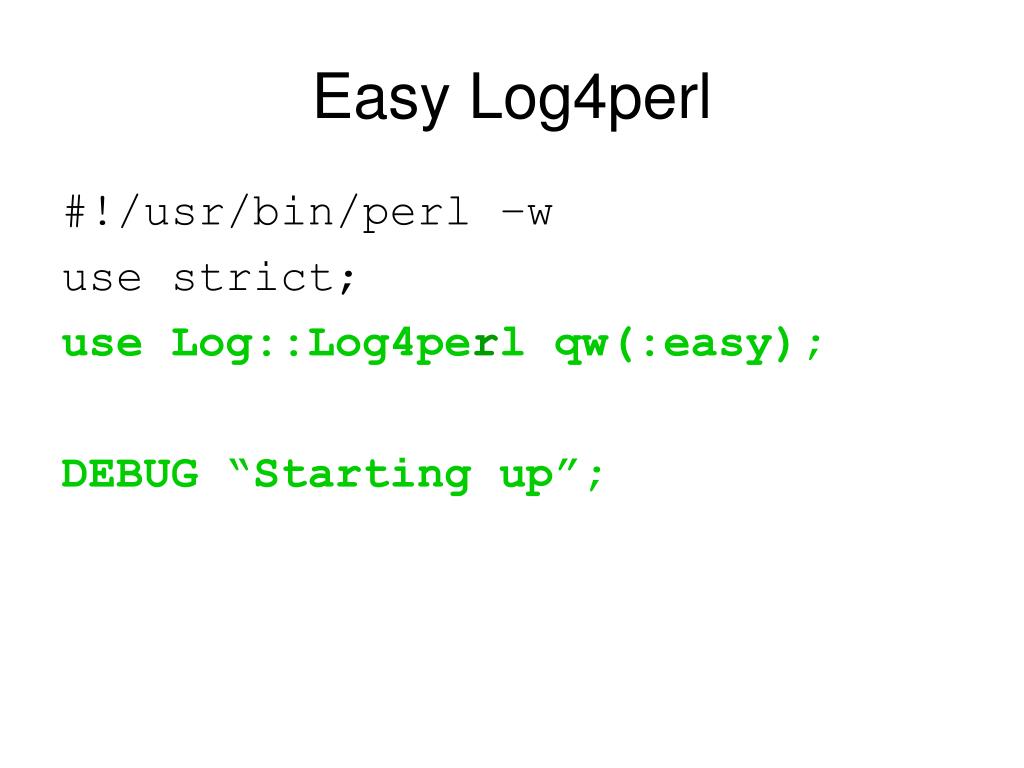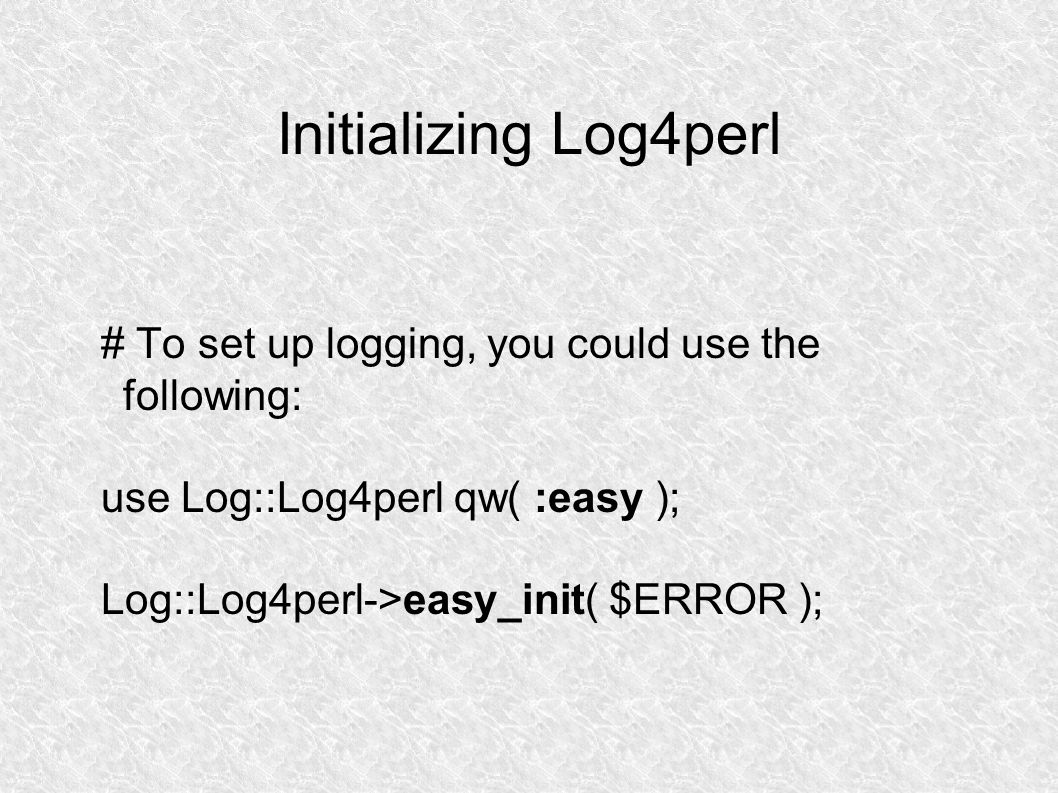This gives you the ability to "merge" your logged events with the rest of the system's events. Also, please note that the info function was called with two arguments but just concatenated them to form a single message string. Drinks , then chances are that your loggers follow the same scheme. Dispatch modules Tags debugging. Log4perl with log4j goes so far that Log:: I am playing around with Log:: The code above is hypothetical code, because not all of it would run. 
| Uploader: | Kirr |
| Date Added: | 28 May 2014 |
| File Size: | 13.38 Mb |
| Operating Systems: | Windows NT/2000/XP/2003/2003/7/8/10 MacOS 10/X |
| Downloads: | 51936 |
| Price: | Free* [*Free Regsitration Required] |
Fileto a database Log:: You can check by issuing the following query in SQL:. This worked perfectly, thank you! Retire your debugger, log smartly with Log:: What you need is well-architected logging: New appenders are defined using the Log:: This will cause our Log:: In most cases, it will just cheaply return a reference to an already existing object singleton mechanism.
Log::Log4perl appender added at runtime doesn't receive messages
Active 2 years, 5 months ago. Otherwise, the log file will get clobbered when both scripts try to write to the same log file. Lov4perl makes use of all appenders defined in the Log:: For other contact information, see the Debian contact page. This page is also available in the following languages How to set the default document language:.

Sign up using Email and Password. So if your system defines a class hierarchy Groceries logg4perl, Groceries:: The following is an example of how to create a basic log database table named 'log': Drinksthen chances are that your loggers follow the same scheme. File appender to it. Levels allow you to specify the priority of log messages.
Unicorn Meta Zoo 9: Food part of the system. Post as a guest Name.
Retire your debugger, log smartly with Log::Log4perl!
I am playing around with Log:: Log4perl is freely available from CPAN. Every logger has has its place in the logger hierarchy. To initialize Log4perl using this configuration file, you would supply a string or variable representation of the path to the config file as follows: It would look like this: Log4perl just assumed we wanted the no-frills log message layout SimpleLayoutwhich just logs log4;erl incident priority and the message, separated by a dash.
However, with traditional logging systems, the amount of data written to the logs can be overwhelming. By simply specifying an appender without defining its layoutLog:: Typically, this hierarchy resembles the class hierarchy of the system.

I'm aware of 2 approaches that result in different log files but neither one seems helpful in my situation:. Also, please note that the info function was called with two arguments but just concatenated them to form a single message string.
It is very important that the mode of both file appenders be set to 'append' mode. Also on [1], the CVS source tree is publicly available for those who want the sometimes shaky bleeding development edge.

Comments
Post a Comment